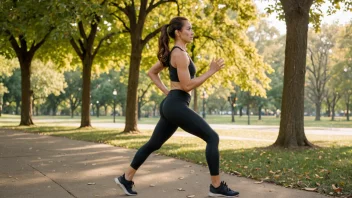Introduction
In today's fast-paced world of sports and athletics, having a supportive training community can significantly enhance your performance and motivation. This article will guide you through the essential steps to build a vibrant and encouraging training community, whether you're an athlete or a coach. You'll learn about fostering connections, creating communication channels, organizing events, and maintaining a positive environment.
Step 1: Identify Your Goals
Before you start building your community, it's important to identify what you want to achieve. Ask yourself the following questions:
- What type of athletes do you want to include? (e.g., beginners, advanced, specific sports)
- What are the main objectives? (e.g., improving performance, sharing knowledge, social interactions)
- What values do you want to promote? (e.g., inclusivity, respect, motivation)
Having clear goals will help you shape your community's direction.
Step 2: Choose Your Platform
Decide where your community will interact. Options include:
- Social Media Groups: Create a Facebook or WhatsApp group for easy communication.
- Forums: Use platforms like Reddit or dedicated sports forums for in-depth discussions.
- Meetup Apps: Organize events through platforms like Meetup.com to reach local athletes.
Choose a platform that suits your community's needs and is easy for members to access.
Step 3: Foster Connections
Encouraging members to connect is vital for a supportive community. Here’s how to do it:
- Icebreakers: Start with introductory posts where members share their backgrounds and goals.
- Buddy System: Pair up members for training sessions to build rapport.
- Encourage Sharing: Create a space for members to share their training progress, tips, and experiences.
These connections will help create a sense of belonging and support.
Step 4: Organize Regular Training Sessions
Consistent training sessions are crucial for community engagement. Consider the following:
- Frequency: Set a regular schedule (e.g., weekly or bi-weekly) for training sessions.
- Variety: Incorporate different types of training (e.g., strength, endurance, skill-based) to cater to all members.
- Location: Choose accessible locations that are convenient for most members.
Regular sessions will keep members motivated and encourage attendance.
Step 5: Create a Positive Atmosphere
A supportive community thrives in a positive environment. To promote this:
- Encourage Feedback: Regularly ask for feedback on sessions and community activities.
- Recognize Achievements: Celebrate accomplishments, no matter how small, to boost morale.
- Promote Respect: Establish a code of conduct that emphasizes respect and inclusivity.
Creating a positive atmosphere will ensure members feel valued and supported.
Step 6: Share Resources and Knowledge
Sharing knowledge can enhance the learning experience for all members. Here’s how:
- Workshops: Organize workshops on topics like nutrition, injury prevention, or specific skills.
- Resource Sharing: Create a document or folder where members can share articles, videos, and training tips.
- Guest Speakers: Invite athletes or coaches to speak about their experiences and insights.
Sharing knowledge keeps the community engaged and encourages continuous learning.
Step 7: Evaluate and Adapt
Finally, regularly evaluate the effectiveness of your community and make necessary adjustments:
- Surveys: Conduct surveys to gather opinions on what’s working and what isn’t.
- Set New Goals: As your community grows, set new goals to keep members motivated.
- Be Open to Change: Be willing to adapt the community structure based on members’ needs.
Continuous evaluation will help maintain a vibrant and effective community.
Conclusion
Creating a supportive training community is a rewarding endeavor that can significantly enhance athletic performance while fostering safety and camaraderie. By identifying your goals, choosing the right platform, fostering connections, organizing training sessions, creating a positive atmosphere, sharing knowledge, and evaluating your progress, you can build a thriving community. Remember, the strength of your community lies in the bonds you create and the support you offer each other. Happy training!






